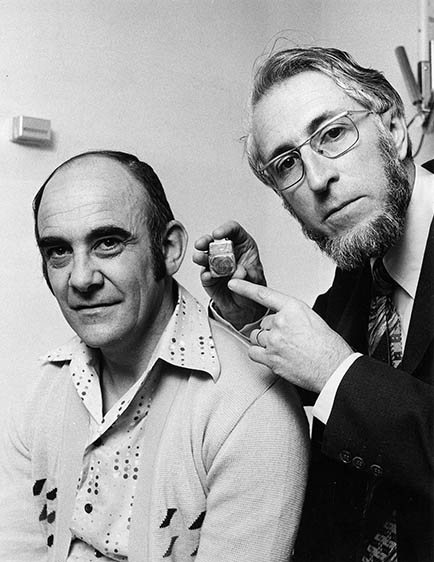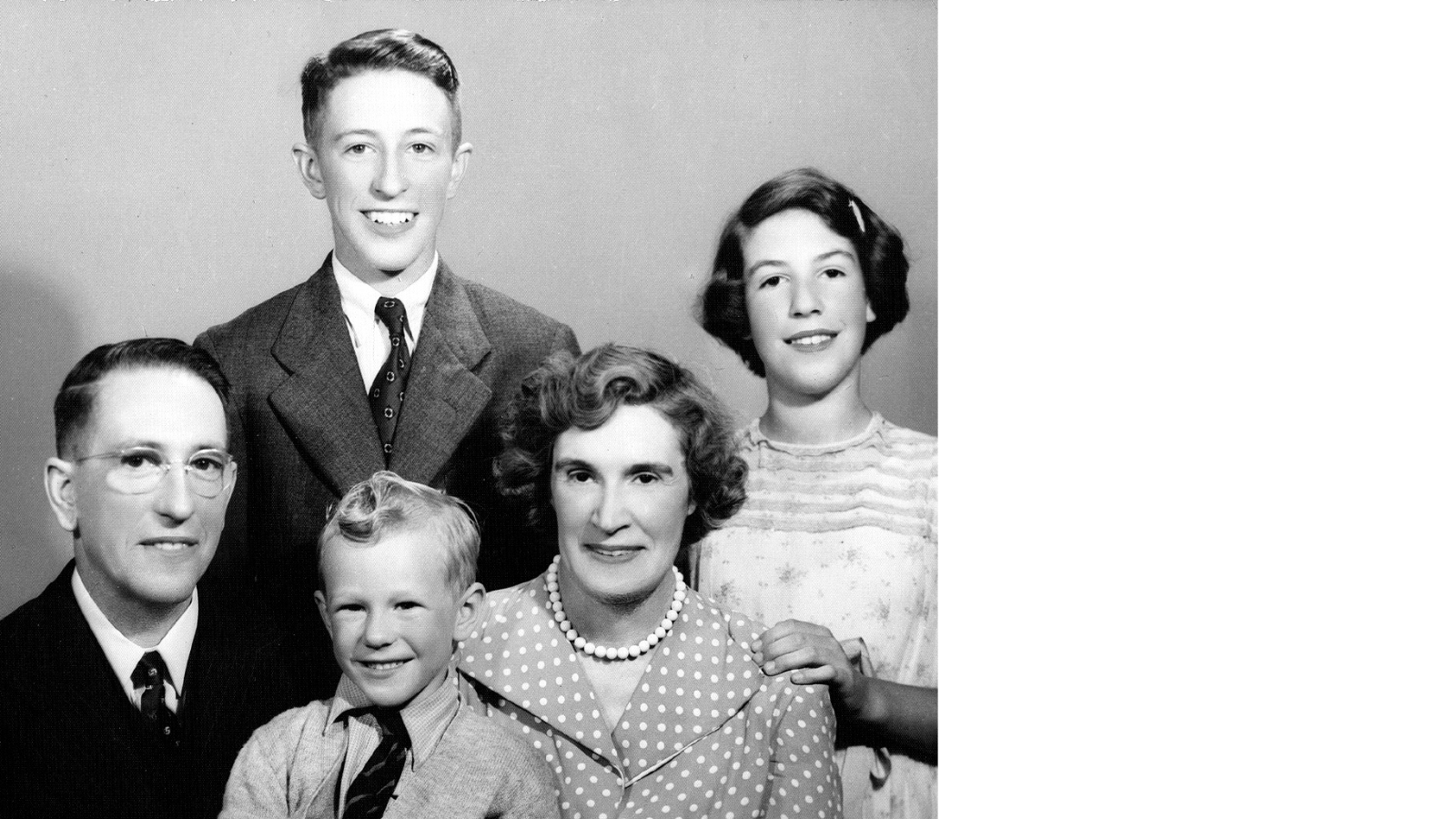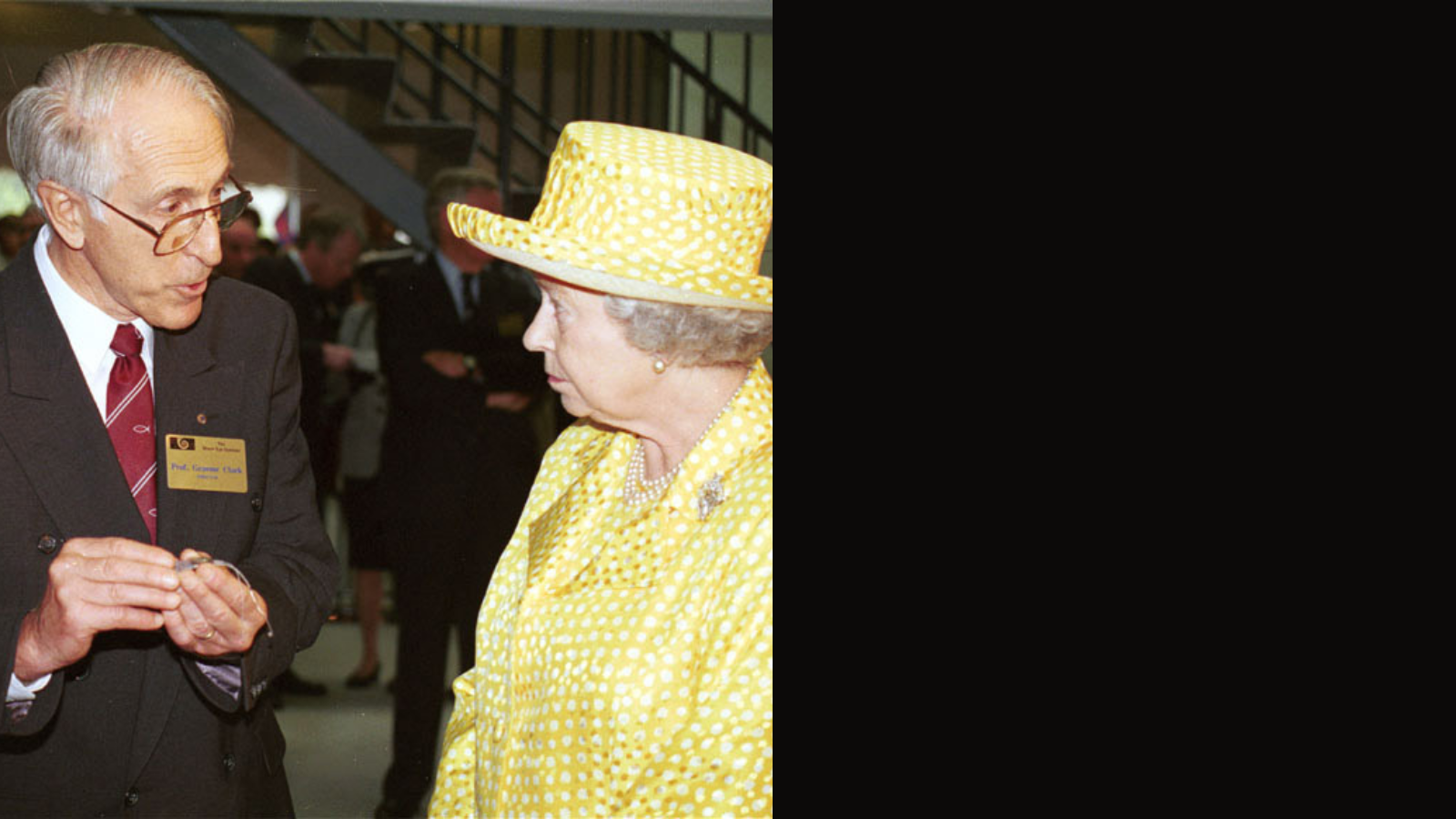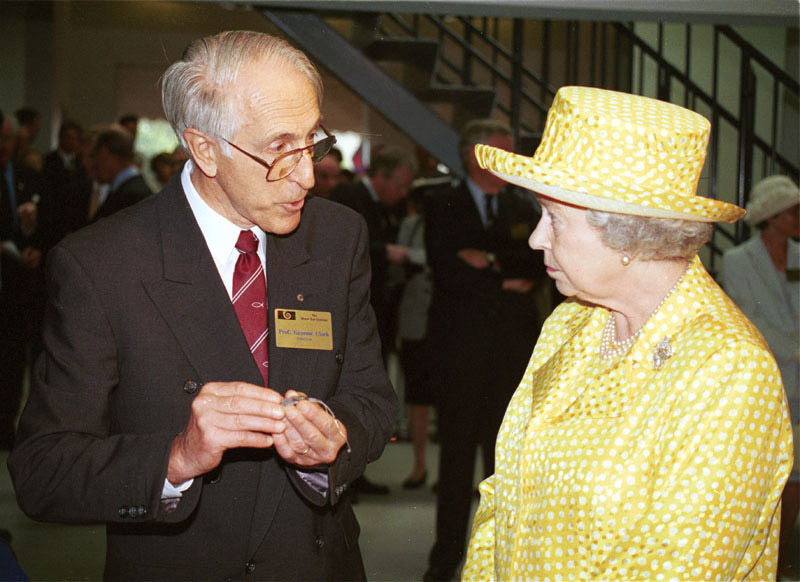Laureate Professor Graeme Clark AC
Graeme Clark AC Laureate Professor at the University of Melbourne initiated and led the team that invented Australia’s multi-channel cochlear implant which was developed by Cochlear Limited, and is the founder of the Bionics Institute.
Professor Clark and his team achieved an incredible breakthrough with the cochlear implant, which is regarded by many as the greatest advance in the treatment of hearing loss.
The cochlear implant is one of Australia’s most important innovations and has given the ability to hear and understand speech to nearly a million children and adults.
This success has helped establish the discipline of Biomedical Engineering.
By allowing deaf people to hear and understand speech, the cochlear implant has also created the field of medical bionics – the combination of biology and electronics for new treatments and diagnostic tools.
“Although I was privileged to lead teams at the University of Melbourne and later at the Bionic Ear Institute, the Multi-channel cochlear implant (bionic ear) could never have been developed in Australia if it had not been for the strong support from the University of Melbourne’s Faculty of Health Sciences and Engineering, the Royal Victorian Eye & Ear Hospital and Nucleus/Cochlear. We must never forget their great support”
– Laureate Professor Graeme Clark AC
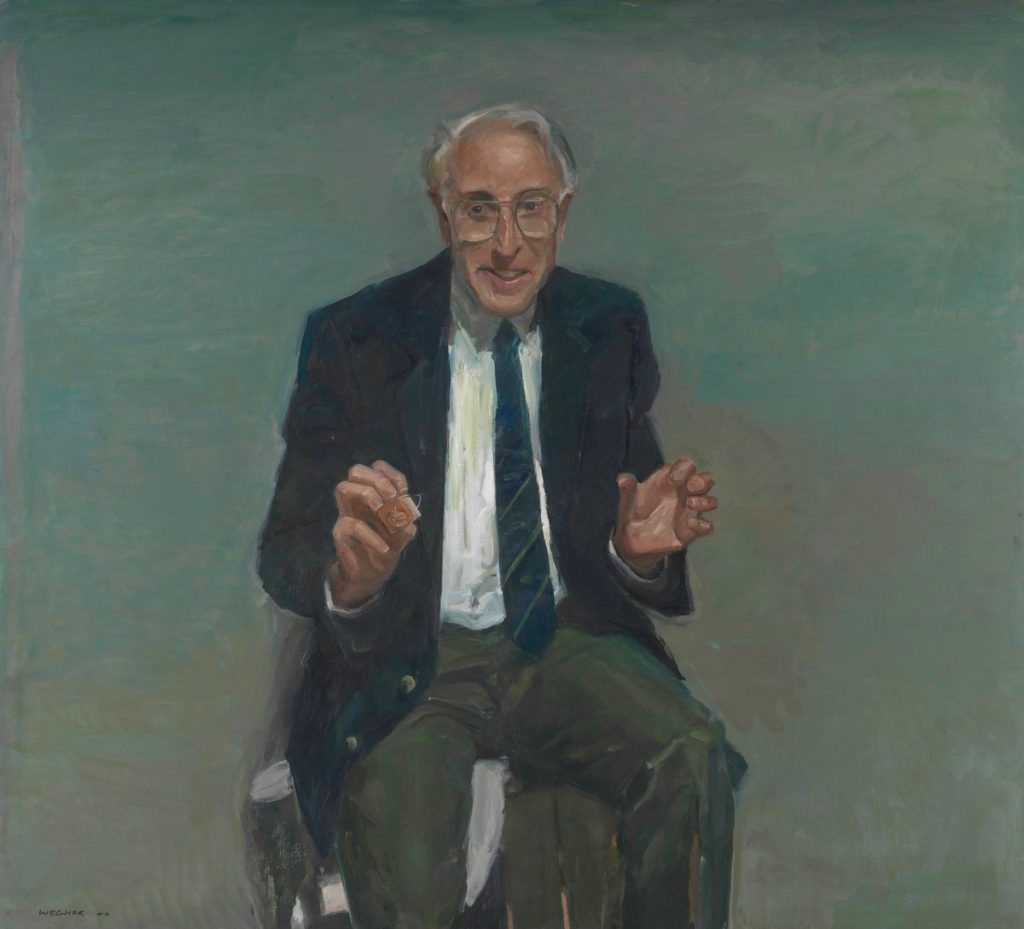
Portrait of Professor Graeme Clark 2000 by Peter Wegner
Oil on canvas
National Portrait Gallery of Australia
Gift of the family of Professor Graeme Clark 2001.
Donated through the Australian Government’s Cultural Gifts Program.
© Peter Wegner
Photo © National Portrait Gallery of Australia
Click here to learn more about this portrait from the National Portrait Gallery
The Cochlear Implant
In normal hearing, hair cells in the inner ear transmit vibrations due to sound to the hearing nerves in the inner ear, which then, in turn, transmit the sound signal to the brain.
A cochlear implant replaces the function of the hair cells in the inner ear, which are damaged or lost in the case of a severe hearing impairment.
Small electrodes are placed in the inner ear, which activate the hearing nerve using small pulses of electrical current.
An external sound processor is worn like a hearing aid behind the ear or on the scalp.
This processor encodes the sound and transmits instructions to the implanted electronics (called the receiver/stimulator), which activates the electrodes in a specified pattern to stimulate the hearing nerve.
Professor Clark’s Story
Professor Graeme Clark AC was born in Camden, New South Wales in 1935 and boarded at Scots College in Sydney (1).
He graduated in Medicine in 1957 from the University of Sydney with first place in his final year and honours over the course.
Professor Clark was inspired by his father’s struggle with deafness and specialised in otolaryngology (ear, nose and throat).
He gained experience at the Royal Prince Alfred and North Shore Hospitals before moving to England to gain further experience.
In England, Professor Clark worked at the Royal National Throat, Nose and Ear Hospital and at Bristol General Hospital.
He returned to Melbourne in 1963 to be a consultant at the Royal Victorian Eye and Ear, Alfred, Austin and Repatriation General Hospitals.
Professor Clark felt that more could be done to treat nerve deafness and for that reason, he left private practice in Melbourne at the end of 1966 to study at the University of Sydney in auditory brain science and obtained a Doctor of Philosophy (PhD) degree on the subject of “Middle Ear and Neural Mechanisms in Hearing and in the Management of Deafness” (1969).
In 1978 on 1st August, Professor Clark implanted totally deaf Rod Saunders ably assisted by A/Professor Brian Pyman, in what was the first successful cochlear implant and heralded the start of a new era in the treatment of deafness.
In 1985, the cochlear implant became the first multi-channel device to be approved by the US Food & Drug Administration (FDA) for adults who had hearing before going deaf.
I was so overcome with emotion, I went quietly into the next door lab and burst into tears of joy. Professor Greame Clark – after the first successful cochlear implant in 1978
Founding of the Bionics Institute
Following the success of the cochlear implant, Professor Graeme Clark founded the Bionics Institute in 1986 to continue its development.
Today, our multidisciplinary team comprises world-class scientists, engineers and researchers, and our laboratories are located at St Vincent’s Hospital Melbourne, close to our clinical collaborators.
The technology developed for the cochlear implant is still used to create medical devices today, and research into optimising cochlear implants continues at the Bionics Institute.
Together, we transform the lives of people with a range of conditions, including hearing impairment, Crohnʼs disease, Parkinsonʼs disease, Alzheimer’s disease, epilepsy, stroke, arthritis and diabetes.
Professor Greame Clark’s notable honours
Through his pioneering work, Professor Greame Clark has had a distinguished and highly decorated career with significant awards to his name.
In 1983, Graeme was anointed as an Officer of the Order of Australia, and in 2004, was elevated to a Companion of the Order of Australia (AC), the country’s highest civil honour, for services to medicine and to science through innovative research to further the development of cochlear implant technology for worldwide benefit.
Other significant awards include the Clunies Ross National Science and Technology Award (1993), Sir William Upjohn Medal from the University of Melbourne (1997), Senior Australian of the Year (2001) and the Prime Minister’s Prize for Science (2004).
Notable academic honours include Fellow of the Australian Academy of Science (1998), Honorary Fellow of The Royal Society of Medicine (London, 2003), Fellow of the Royal Society (London, 2004) and Doctor Honoris Causa, University of Zaragoza, Spain (2010).
Professor Graeme Clark hosted the late Queen Elizabeth II and the Duke of Edinburgh at the Bionics Institute in 2000.
The Legacy of Professor Greame Clark
The legacy of Professor Graeme Clark continues to inspire our multidisciplinary approach to solving challenging medical conditions.
He understood that it required a team of leading clinicians, researchers and engineers to create the cochlear implant, and this multidisciplinary approach continues today.
Our vision is to lead the world in the development and translation of bionic health solutions.
Sources
1. https://graemeclarkfoundation.org/about-graeme-clark/
2. https://www.science.org.au/learning/general-audience/history/interviews-australian-scientists/professor-graeme-clark
3. https://www.bbc.com/storyworks/culture/the-mind-behind/the-gift-of-hearing
